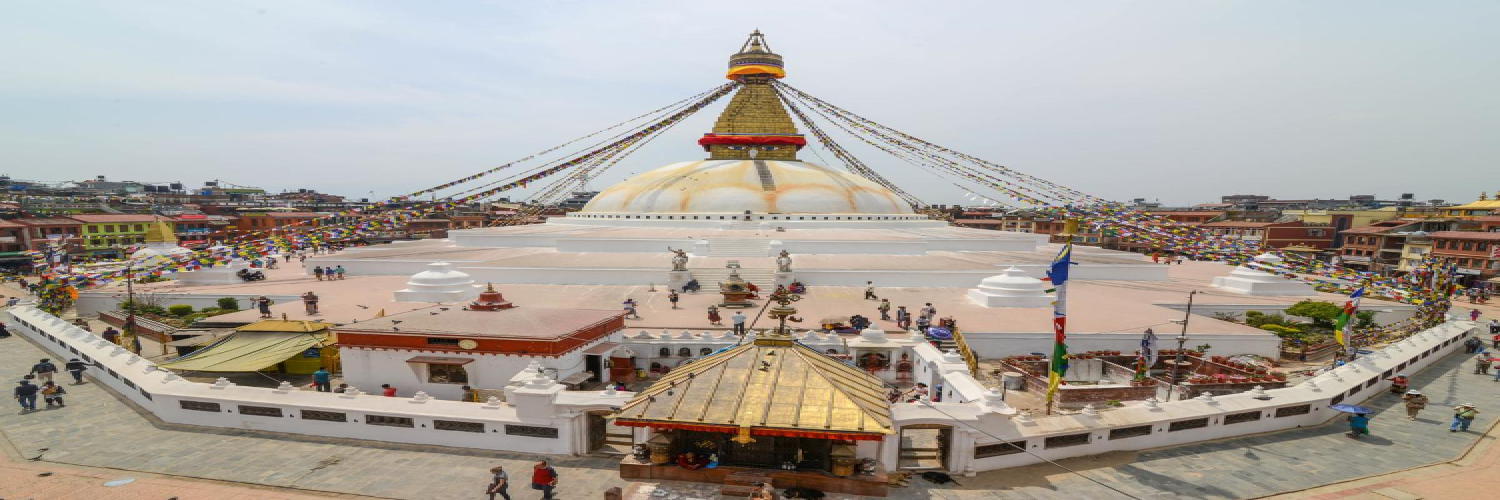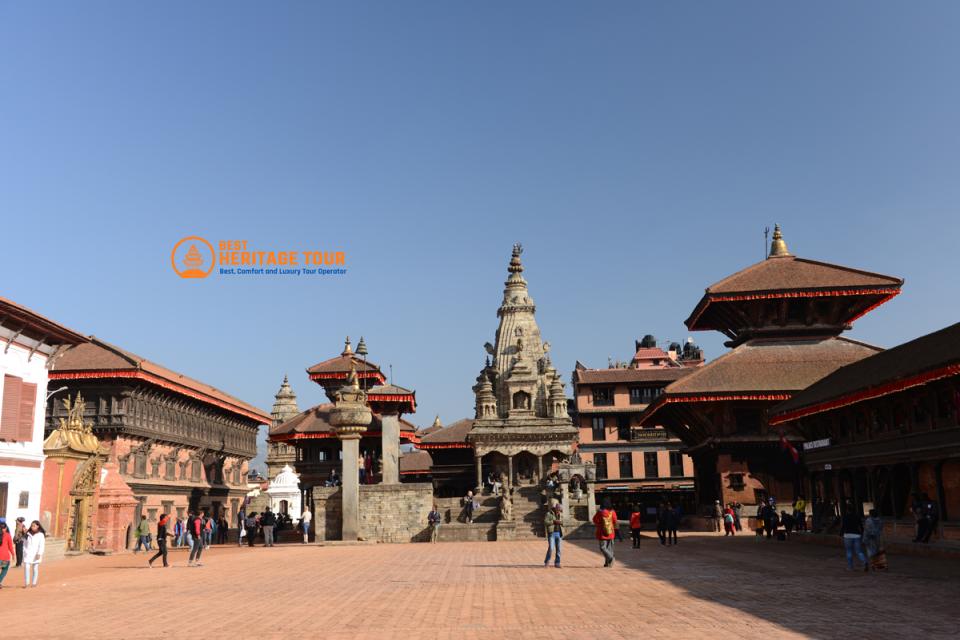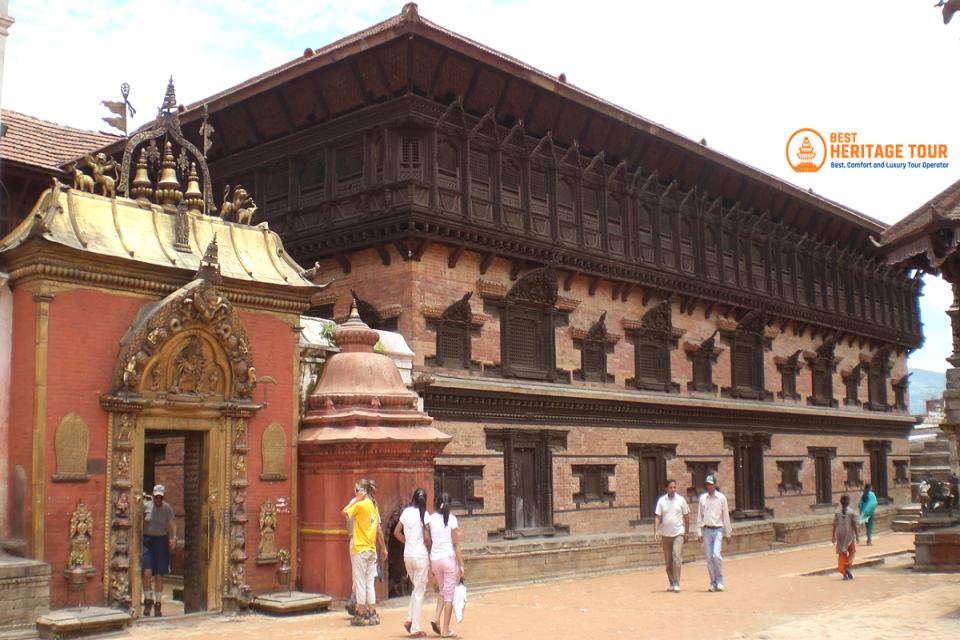Nestled in the heart of Kathmandu, Boudhanath is much more than just a spiritual and cultural landmark, it is a vibrant hub of Tibetan culture and heritage. Known for the iconic white stupa with its mesmerizing eyes, Boudhanath offers visitors a glimpse into Tibetan Buddhist traditions and a thriving community that has called this place home for decades. For travelers and food lovers alike, Boudhanath is a treasure trove of flavors waiting to be discovered. The Tibetan cuisine here is authentic, rich in history, and full of warmth, reflecting the resilience and hospitality of the Tibetan people.
A Brief History of Tibetan Settlement in Boudhanath
The history of Tibetan settlement in Boudhanath dates back to the 1950s, following political upheaval in Tibet. After the Chinese annexation of Tibet in 1959, thousands of Tibetans fled their homeland seeking refuge in neighboring countries, including Nepal. Many found sanctuary around Boudhanath, which already had a significant Buddhist presence due to the ancient stupa, a UNESCO World Heritage site.
The Nepalese government granted land around the stupa to Tibetan refugees, leading to the establishment of a vibrant Tibetan settlement. This community flourished over the decades, preserving their rich cultural heritage while adapting to their new environment. Today, Boudhanath is considered one of the largest Tibetan settlements outside Tibet, with monasteries, shops, and markets that keep the Tibetan spirit alive.
The Tibetan community here has not only enriched the spiritual landscape but also introduced their unique lifestyle, crafts, and most notably, their cuisine. Walking through Boudhanath’s narrow streets, you can hear the prayers and mantras blending with the sizzle and aroma of traditional Tibetan food being prepared, a true feast for the senses.
Exploring Authentic Tibetan Cuisine in Boudhanath
Tibetan cuisine reflects the rugged Himalayan environment and centuries-old culinary traditions shaped by the land and lifestyle. Every dish tells a story of warmth, nourishment, and resilience, crafted to comfort the soul and body in the cold mountain climate. When wandering through Boudhanath’s bustling alleys, the aromatic scents and vibrant colors of Tibetan food invite you on a sensory journey unlike any other.
Here are the must-try Tibetan dishes, described in delicious detail:
1. Momos- Steamed or Fried Dumplings Bursting with Flavor
Momos are undoubtedly the crown jewel of Tibetan food, loved by locals and travelers alike. These small, hand-crafted dumplings are made from thin, slightly elastic wheat dough that wraps around a savory filling. Depending on the recipe, momos can be steamed to silky perfection or fried until golden and crisp on the outside.
Inside, the filling offers a tender, juicy bite often a mix of finely minced yak, chicken, or mutton seasoned with garlic, ginger, and fresh herbs like cilantro. The meat is moist but not greasy, infused with subtle warmth from traditional Tibetan spices. Vegetarian versions showcase a medley of cabbage, mushrooms, and carrots, adding a fresh, earthy crunch.
Each momo is served with a vibrant red chili and tomato-based dipping sauce, tangy and spicy, which awakens your taste buds and perfectly complements the mildness of the dumpling. The first bite releases a burst of juices, blending soft dough, meaty umami, and fiery heat, comfort food elevated to an art form.
2. Thukpa - Soul-Warming Tibetan Noodle Soup
Thukpa is a hearty noodle soup that embodies Tibetan comfort cuisine, perfect for the cool mountain air around Boudhanath. The broth is a clear, aromatic base simmered with layers of garlic, ginger, and mild spices, often enhanced by the addition of simmered bones or vegetable stock.
Thick, hand-pulled wheat noodles float within, tender but chewy, absorbing the rich flavors of the broth. Mixed vegetables like spinach, tomatoes, and spring onions add bursts of color and freshness, while chunks of yak or chicken provide a savory depth.
The warmth of the steaming bowl, combined with the umami-packed broth and the texture of the noodles, offers a soothing and satisfying meal that replenishes energy and spirit.
3. Tingmo - Fluffy Steamed Tibetan Bread
Tingmo is a soft, cloud-like steamed bread that acts as the perfect neutral partner to the more intensely flavored Tibetan dishes. Unlike flatbreads, tingmo is rolled and twisted into delicate layers before steaming, creating a tender yet slightly chewy texture that pulls apart easily.
Its subtle sweetness and light fluffiness make it ideal for mopping up thick curries, sauces, or simply enjoying with a pat of butter or honey. When freshly steamed, tingmo has a warm, yeasty aroma and a pillowy softness that melts in your mouth.
4. Sha Phaley - Crispy Fried Meat Patties with a Juicy Center
Sha Phaley is a popular street food and appetizer that offers a satisfying contrast of textures. These deep-fried patties have a crunchy golden-brown exterior that crackles slightly when bitten, revealing a juicy, flavorful filling inside.
The filling is usually a mixture of minced yak or mutton combined with finely chopped onions, garlic, ginger, and warming Tibetan spices like Sichuan pepper and coriander. The blend is well-seasoned but balanced, offering a smoky, meaty richness that’s both hearty and aromatic.
These patties are often enjoyed hot, their crispy shell encasing a tender, savory center, making every bite a delightful play of textures and flavors.
5. Gyurma - Rich and Earthy Tibetan Blood Sausage
Gyurma is an adventurous delicacy deeply rooted in Tibetan culinary tradition, showcasing the community’s respect for using every part of the animal. Made from yak or sheep’s blood mixed with roasted barley flour and spices, it’s stuffed into natural casings to create thick sausages.
When cooked either boiled or pan-fried, gyurma develops a dense, slightly chewy texture with a rich, earthy flavor that can be described as gamey yet savory. The seasoning balances the natural intensity of the blood with aromatic spices like cumin and garlic.
This dish is typically enjoyed in small slices as a snack or side dish and pairs well with Tibetan butter tea to balance its robust flavor.
6. Shabalay - Crispy Tibetan Meat Pies with Spiced Fillings
Shabalay are pocket-sized fried meat pies with a flaky, golden crust that crackles delightfully with each bite. The dough is rolled thin and wrapped around a juicy filling, traditionally a mixture of ground mutton or yak blended with onions, garlic, and a touch of black pepper.
Inside, the filling is tender, juicy, and warmly spiced, offering a comforting richness against the crispy exterior. The pies are often served hot, releasing aromatic steam that hints at their flavorful contents.
Shabalay are beloved for their portability and satisfying combination of crunch and softness, making them a perfect snack while exploring Boudhanath.
7. Thenthuk - Hand-Pulled Noodle Soup
Thenthuk is a rustic noodle soup that stands apart due to its unique preparation. The noodles are hand-pulled and torn into thick, irregular strips before being cooked directly in a savory broth.
The broth, usually rich with garlic, ginger, and a mix of Tibetan spices, is hearty and deeply flavorful. The chewy, thick noodles provide a pleasing mouthfeel, absorbing the broth’s aromatic essence with every bite.
Vegetables like bok choy, carrots, and tomatoes add subtle sweetness and crunch, while pieces of meat often yak or chicken bring umami depth. Thenthuk is a filling, warm dish, perfect for cold days or as a restorative meal after a long day of sightseeing.
8. Gyathuk - Vibrant Tibetan Vegetable Noodle Soup
Gyathuk is a vegetarian noodle soup featuring thick wheat noodles swimming in a light yet flavorful broth. The broth is made from simmered vegetables and infused with mild spices and fresh herbs such as coriander and spring onions.
Vegetables such as mushrooms, leafy greens, and carrots add layers of texture earthy, crisp, and tender all at once. The noodles are soft and slippery, perfectly complementing the broth’s clean, herbal notes.
Gyathuk is often enjoyed by those seeking a lighter, vegetarian-friendly option without compromising on authentic Tibetan flavor.
9. Butter Tea (Po Cha) - The Soul-Warming Tibetan Elixir
Butter tea, or Po Cha, is a unique Tibetan beverage crafted for survival in cold, high-altitude climates. Made by whisking together strong brewed tea leaves, creamy yak butter, salt, and sometimes a pinch of baking soda, it results in a frothy, savory drink unlike any other.
The rich, oily mouthfeel from the butter combined with the slight bitterness of the tea and the saltiness creates a complex flavor profile. The drink is energizing and warming, providing calories and hydration in harsh weather.
Sipping butter tea in Boudhanath is not just about taste but also about immersing oneself in Tibetan hospitality and tradition.
10. Tsampa - Roasted Barley Flour Staple
Tsampa is a dietary cornerstone in Tibetan cuisine, made by roasting barley grains into a fine flour. Traditionally, Tibetans mix tsampa with butter tea or water to create a dense dough or small balls that can be eaten quickly for energy.
It has a nutty, toasty flavor and a coarse yet pleasant texture. Tsampa is highly nutritious, providing fiber, vitamins, and minerals essential for high-altitude living.
Eating tsampa in Boudhanath offers insight into the simple yet resilient Tibetan lifestyle, where food is both sustenance and cultural identity.
11. Laphing - Spicy and Refreshing Cold Noodle Salad
Laphing is a cold noodle salad popular during warmer months in Tibetan communities. The noodles are made from mung bean starch, giving them a slippery, gelatinous texture.
Tossed in a fiery chili oil dressing with garlic, sesame seeds, and fresh herbs like cilantro, laphing is a spicy, tangy, and refreshing dish that contrasts beautifully with the more warming Tibetan meals.
It’s a popular street food in Boudhanath, offering a burst of heat and freshness that awakens the palate.
12. Sha Balep - Fried Meat Pies with a Crispy
Similar to shabalay, sha balep are another type of Tibetan fried meat pie, but sometimes feature a slightly different dough or spice mix. The golden crust is crisp and flaky, enclosing a juicy, spiced meat filling made from mutton or yak.
These pies are often enjoyed piping hot, with the aroma of fried dough and spices filling the air. They pair wonderfully with a cup of hot Tibetan butter tea or sweet tea, completing a perfect Tibetan snack experience.
13. Tibetan Sweet Tea
Complementing the savory butter tea, Tibetan sweet tea is brewed strong with tea leaves, milk, and sugar. It has a creamy, mildly sweet flavor that soothes and comforts after a hearty meal.
This tea is often served during social gatherings or after meals, providing a gentle balance to the more robust flavors of Tibetan food.
Why You Should Explore Tibetan Food in Boudhanath
For travelers and food lovers, Boudhanath offers an unparalleled chance to experience Tibetan cuisine in its cultural context. Here, food is a bridge connecting past and present, spirituality and sustenance, tradition and innovation.
Each bite tells a story from the bustling kitchens crafting fresh momos to the quiet moments shared over butter tea. Whether you seek hearty, warming dishes or light, refreshing snacks, Tibetan cuisine in Boudhanath promises a feast that delights the senses and nourishes the soul.
Discover the Rich Flavors of Tibetan Cuisine in Boudhanath
Boudhanath stands as a vibrant gateway to Tibetan culture, where every corner offers a delicious taste of authentic Tibetan cuisine. From the iconic momos and soul-soothing thukpa to the unique flavors of butter tea and gyurma, the food to try in Boudhanath is as rich and diverse as its history and people.
Exploring Tibetan food here is not just a culinary adventure, it’s an immersion into centuries-old traditions, spiritual rituals, and a resilient community’s way of life. The flavors are bold yet comforting, the textures varied and inviting, and every dish serves as a warm welcome to travelers and foodies alike.
If you’re planning a trip to Nepal, make sure that tasting authentic Tibetan cuisine in Boudhanath is at the top of your itinerary. Whether you’re wandering the vibrant streets, soaking in the spiritual atmosphere of the stupa, or simply seeking nourishing, flavorful food, Boudhanath’s Tibetan culinary offerings promise an unforgettable experience.
Ready to Explore Tibetan Cuisine and Culture in Boudhanath?
Let Best Heritage Tour be your trusted guide to discovering the rich flavors and vibrant traditions of Tibetan cuisine in Boudhanath. Whether you’re a seasoned traveler or a curious foodie, our expert team will help you create an unforgettable journey filled with authentic experiences.
Contact Best Heritage Tour today to book your personalized tour or to learn more:
Phone: +977-9851149197
Email: info@bestheritagetour.com
Website: www.bestheritagetour.com
Discover Nepal’s culture, cuisine, and history with the experts. Your next adventure starts here!
Author: Best Heritage Tour
Date: 26th May, 2025





